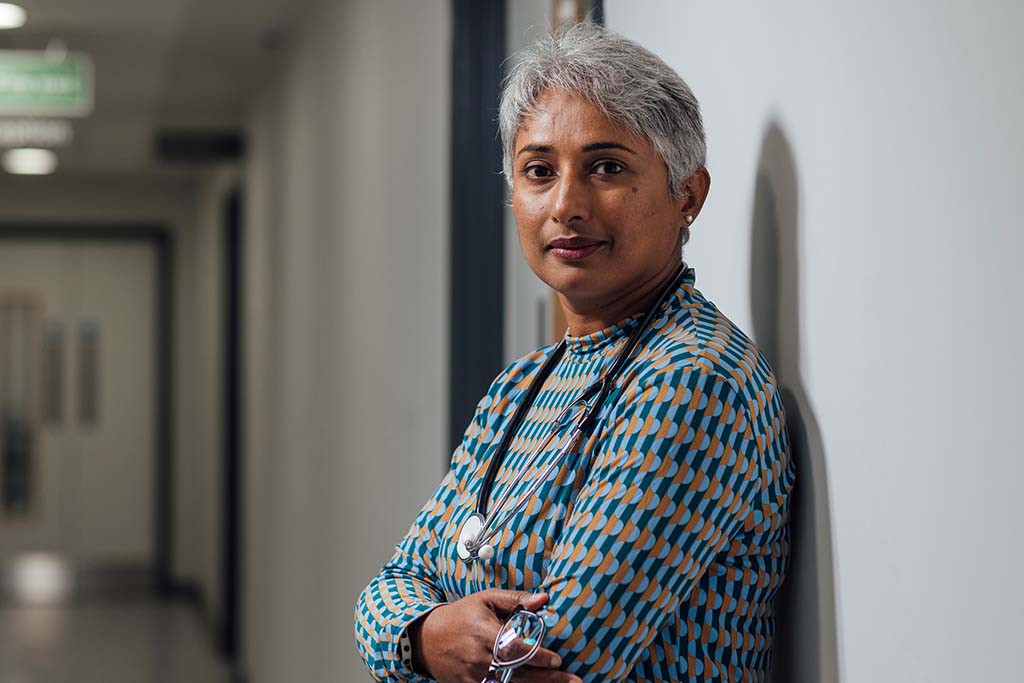Insights
How can we make sure different healthcare systems speak the same language?
5 minutes
10th July 2024
Share this article:
Mark Burton, Health and Social Care Lead
49% of healthcare professionals say limited investment is holding their organisation back from reaching its digital potential, according to our new report, ‘Bridging the digital gap in UK healthcare’.
And 41% cite a cultural resistance to change as another significant barrier.
These obstacles are contributing to varying levels of digital maturity across the NHS, increasing the risk of data siloes and incompatibility between systems.
To accelerate progress across the nation, different trusts with different levels of digital maturity now must find ways to communicate and share data with each other.
In Digital Health’s recent roundtable, we met with leaders across the healthcare sector to discuss what solutions are out there for integrated care boards (ICBs).
We discussed the importance of a seamless flow of data and explored how organisations can work together to improve staff and patient outcomes alike.
So wherever your organisation is in terms of digital maturity, how can you ensure your data is as accessible, shareable, and powerful as it can be?
Avoiding data siloes
Siloed data is the result of weak links in the chain of patient data flow.
A city-based hospital might have state-of-the-art equipment with powerful connectivity to match, for example, but a smaller GP service may still be using paper records. This leads to bottlenecks in patient data flow that impact patient outcomes.
Mark Thomas, chief digital and information officer at Bedfordshire, Luton and Milton Keynes ICB, speaks about this in Digital Health’s recent roundtable on the development of data sharing in the NHS. He points out that improving data flow isn’t just about direct care data but also the vast array of databases that shared care record providers use for care planning and wider population health management.
With such a vast array of data out there, building an infrastructure capable enough to handle it can feel overwhelming. Mark’s solution is to support your existing teams to get better results with the data they already have.
In the first instance this would mean allocating resource into your analysis teams and ensuring they have what they need to do their jobs in the best way.
But to embed this success into your organisation long term, consider how a trusted digital partner can help you map out the infrastructure and tools needed to support your data ambitions and explore your existing estate to identify what is and isn’t being used.
There’s no one-size-fits-all approach, but the right partner will be able to help you identify solutions to help you access and share data in a more streamlined way, from high-bandwidth connectivity to secure cloud-based data storage.
Preventing data blockades
What’s at stake when ICBs aren’t set up to share data in a secure way?
Healthcare was one of just five sectors that reported an increase in ransomware attack rates over the last year, with 67% of organisations reporting incidents, according to Sophos.
With the threat of data loss and compromised patient confidentiality, these risks are especially important for NHS organisations to consider.
And there is a financial burden too, with the average attack costing over £2 million for organisations across the globe, according to the same report.
For a healthcare system already strained by limited resources and a growing waiting list, this isn’t something that the NHS can afford. That’s why organisations such as Pennine Care NHS Foundation Trust put so much emphasis on cybersecurity to give them the protection and confidence to focus on patient care.
In the words of Mike Culshaw, Chief Technology Officer, they couldn’t ‘put a price on how much these solutions are transforming [their] trust’.
The good news is that data integration also opens up opportunities to build in cybersecurity measures. Solutions such as unified endpoint management (UEM) allow IT and security teams to monitor, manage and secure all end-user devices on the network. This puts the data you need in the palm of your hand even as your staff work out in the field.
With the rise of remote work, partly due to the introduction of innovations such as virtual wards, systems that can upkeep and manage a whole suite of devices through a single platform are crucial to ensuring seamless patient care.
It’s important to also look at the layers of protection you embed into existing technology, with software such as MaaS360 allowing you to create conditional access rules for cloud services or antivirus solutions to automatically detect and remove malware on devices.
By reducing the risk of cyberattacks you’re preventing possible blockades from disrupting the flow of data. This ensures you can continue to deliver the best for your patients without undue cost or interruption.
Consider how cybersecurity can help improve your existing services, then work with your digital partner to take their expertise onboard as you explore further investment in your organisation’s digital development.
What does true integration look like?
In the roundtable, Holly Carr, Chief Clinical Information Officer at Stockport NHS Foundation Trust, highlights that since the pandemic there has been exponential growth in the uptake of technology which has led the NHS to start collecting data on a scale it’s never been able to do before.
But the challenge now is to ensure that this innovation reaches every aspect of the healthcare system to help staff deliver the best care to every patient.
One way to achieve this is to build a culture of digital integration into your organisation. For this to work in practice it’s important that staff involved with clinical data don’t see their roles in isolation.
Technology such as unified communications (UC) and cloud-based storage are taking data closer to the staff and patients that need it, and within each integrated care system (ICS) shared care records ensure that everyone’s role is part of a bigger picture.
So it’s important to consult every part of your organisation to make sure your digital investments are serving them in the best way. Because technology should help your staff help patients, not make their lives harder.
Holly stresses this point. She asserts that digital investment doesn’t mean the restriction of autonomy or the inability to make independent choices. Instead, it’s about bringing expertise into the field to contribute towards one set goal, one set ambition.
The path ahead is different for every organisation, but every step, from infrastructure evaluation to cybersecurity measures, will help healthcare become more integrated and effective for patients across the UK.
Ready to take the next step towards integration?
Read our guide, ‘Bridging the digital gap in UK healthcare’.
Or explore the full writeup from Digital Health’s roundtable.
Want to speak to one of the team?
call 0800 064 3790

